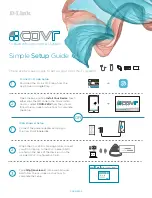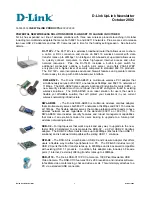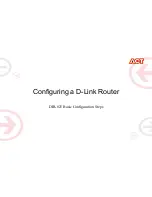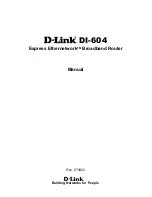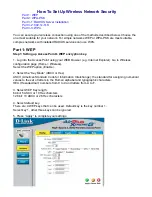
LANCOM OAP
-
54
-
1 Wireless – LANCOM OAC
-
54
-
1 Wireless
Chapter 3: Basic configuration
31
EN
햷
Enter the wireless parameters. Select a network name (SSID) and a radio
channel. Turn on if necessary the function for ’closed network’. Confirm
your choice with
Next
.
햸
In the next window, select your DSL provider from the list that is displayed.
If you select 'My provider is not listed here,' you must enter the transfer
protocol used by your DSL provider manually. Confirm your choice with
Next
.
햹
Connect charge protection can limit the cost of DSL connections to a pre-
determined amount if desired. Confirm your choice with
Next
.
햺
Complete the configuration with
Finish
.
Section 'TCP/IP settings to workstation PCs' will describe the settings
required for the individual workstations in the LAN.
3.3
Instructions for WEBconfig
To configure the device with WEBconfig you must know how to address it in
the LAN. The reaction of the devices, as well as their accessibility for configu-
ration via web browser is dependent on whether a DHCP server and a DNS
server are already active in the LAN, and whether these two server processes
exchange the assignment of IP addresses to symbolic names within the LAN
between each other.
After powered on, unconfigured LANCOM devices check first, whether a DHCP
server is already active in the LAN. Dependent on the situation, the device is
able to switch on its own DHCP server or, alternatively, to activate its DHCP
client mode. In this second operating mode, the device itself can obtain an IP
address from a DHCP server already existing in the LAN.
If a LANCOM Wireless Router or LANCOM Access Point is centrally
managed from a LANCOM WLAN Controller, the DHCP mode is swit-
ched from auto-mode to client mode.
Network without DHCP server
Not for centrally
managed LANCOM
Wireless Router or
LANCOM Access
Points
In a network without DHCP server, unconfigured LANCOM devices activate
their own DHCP server service after starting, and assign appropriate IP
addresses and gateway information to the other workstations within the LAN,
provided that the workstations are set to obtain their IP address automatically
(auto-DHCP). In this constellation, the device can be accessed with any web

































